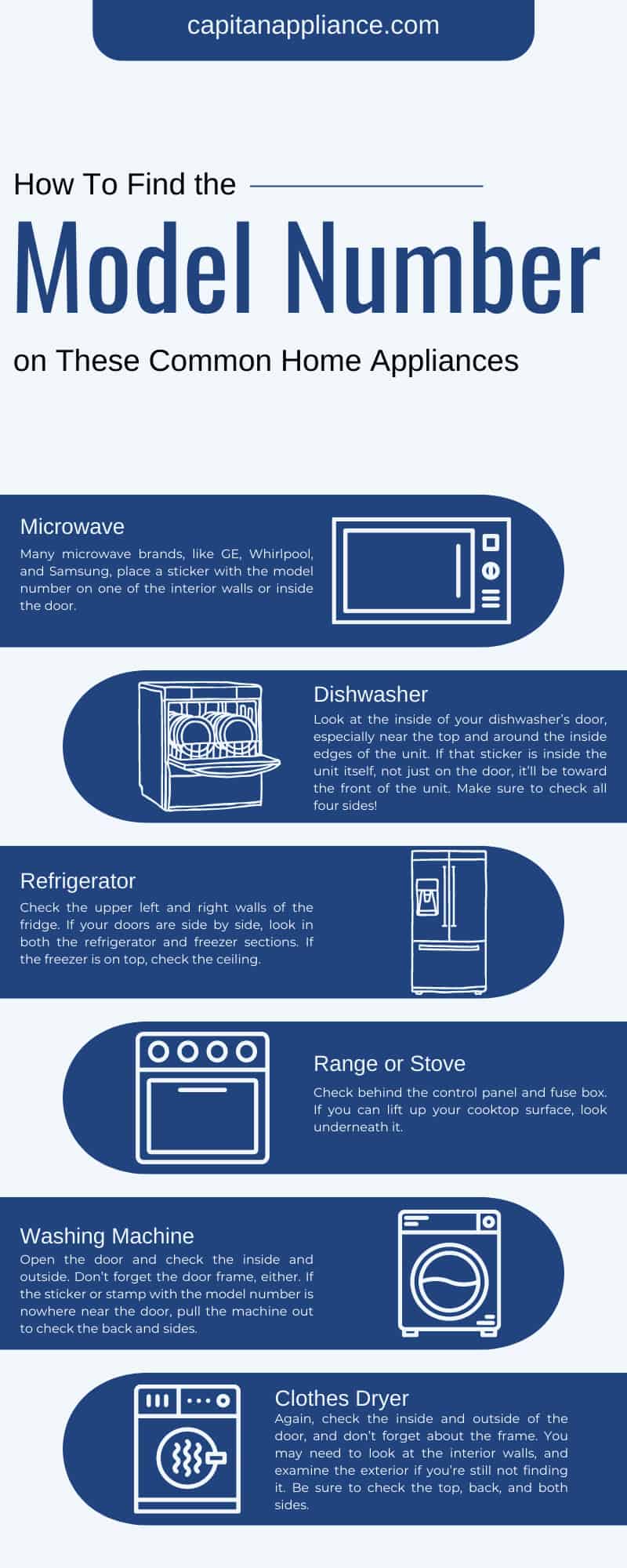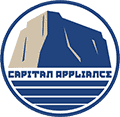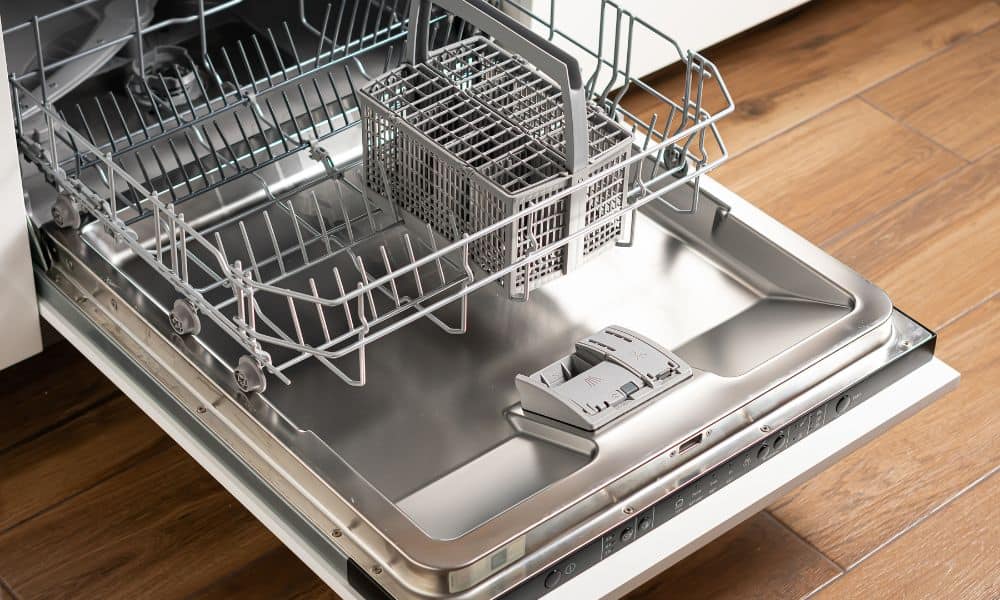So, one of your appliances is not working as intended. To minimize inconvenience to your household, you should arrange to have it repaired as soon as possible. When you call an appliance repair expert, one of the first things they’ll ask for is the model number.
To help the repair expert do their job quickly and accurately, you’ll want to have that model number on hand when you call. But where is it located? How can you find it?
Capitan Appliance has compiled a handy guide for finding the model number on a variety of common home appliances. We’re happy to assist you in getting your appliance back to working condition—help us help you by locating that model number before you call.
Why Is the Model Number So Important?
The model number of your appliance, not to be confused with the serial number, tells your repair expert exactly which kind of appliance you have. This information helps us source any replacement parts we may need in order to fix the appliance.
Appliance manufacturers create a variety of different models for every appliance, and each individual model has its own unique parts. It’s not enough to know the brand name—we need that model number to search for parts quickly and efficiently.
As you inspect your appliance for its model number, keep your eyes peeled for a shiny sticker or tag. It’ll probably have more information on it than just the model number, but more often than not, the number we need is printed on that metallic sticker.
Pro Tip:
Not sure how to tell the difference between a model number and a serial number? For the most part, appliance model numbers begin with letters, followed by numbers. Serial numbers often begin with three numbers, four letters, and several numbers after that.
Microwave
Let’s start small. If your countertop microwave no longer works, open it up to start your search for the model number. Many microwave brands, like GE, Whirlpool, and Samsung, place a sticker with the model number on one of the interior walls or inside the door.
Is your microwave mounted above your range? Look at the underside of the device. Many microwaves that are designed for over-the-range mounting have that sticker on the bottom for easy reading.
Dishwasher
Due to the machine’s size, dishwasher manufacturers don’t make you look on the underside or crawl all the way into the washer to find the model number. If that sticker bearing the model number isn’t visible on the outside of the door or door frame, it’s probably just inside.
Look at the inside of your dishwasher’s door, especially near the top and around the inside edges of the unit. If that sticker is inside the unit itself, not just on the door, it’ll be toward the front of the unit. Make sure to check all four sides!
Refrigerator
Before you call a refrigerator repair expert to fix your broken fridge, make sure you have that model number handy. No matter which type of refrigerator you have—side by side, French doors, or freezer on top—there are a few go-to options for manufacturers to place that sticker.
First, check the upper left and right walls of the fridge. If your doors are side by side, look in both the refrigerator and freezer sections. If the freezer is on top, check the ceiling.
Not finding anything? Check the lower vegetable crisper drawer, the lower toe kickplate, and the face frame of the refrigerator itself.
If the model number is nowhere to be found inside the refrigerator, check the outside. If needed, stand on a step stool to check the top of the fridge, or slide it forward to inspect the sides. Your model number should be in one of the places mentioned above—remember to look for the metallic sticker.
Range or Stove
While many people use the terms range, stovetop, and oven interchangeably, there’s a difference in how they’re used. A stovetop is an open surface for cooking with pots and pans, while an oven is an enclosed appliance used for baking. A range, or stove, is an appliance that incorporates both—this is the most common setup among homeowners.
If your electric or gas range isn’t cooking anymore, check for the model number before calling a repair technician. First, check behind the control panel and fuse box. If you can lift up your cooktop surface, look underneath it.
If the sticker isn’t in one of those places, check the inside and outside of your oven door, as well as the inner walls of the oven itself. If your oven has a lower storage compartment for baking pans and the like, take a look inside.
If that telltale sticker is still nowhere to be found, wiggle the oven out of its space and check the sides. You may even have to look at the back.
Washing Machine
Do you have a front-loading washing machine that’s on the fritz? Open the door and check the inside and outside. Don’t forget the door frame, either. If the sticker or stamp with the model number is nowhere near the door, pull the machine out to check the back and sides.
If you have a top-loading washer, similar principles apply—check the inside and outside of the lid, as well as the frame. Inspect the control panel and the inside walls, too. If you’re still not finding the number, look around the exterior, including the back.
Clothes Dryer
The process for searching for your dryer’s model number is similar to the process for your washing machine, especially if you bought them from the same manufacturer.
Again, check the inside and outside of the door, and don’t forget about the frame. You may need to look at the interior walls, and examine the exterior if you’re still not finding it. Be sure to check the top, back, and both sides.
If one of your most commonly used home appliances isn’t working anymore, don’t delay in calling for repairs. Before you pick up the phone, though, locate the model number and write it down.
We at Capitan Appliance are happy to help our customers get their appliances back in good working condition. Please help us by having your appliance’s crucial information handy when you call for an appointment.


